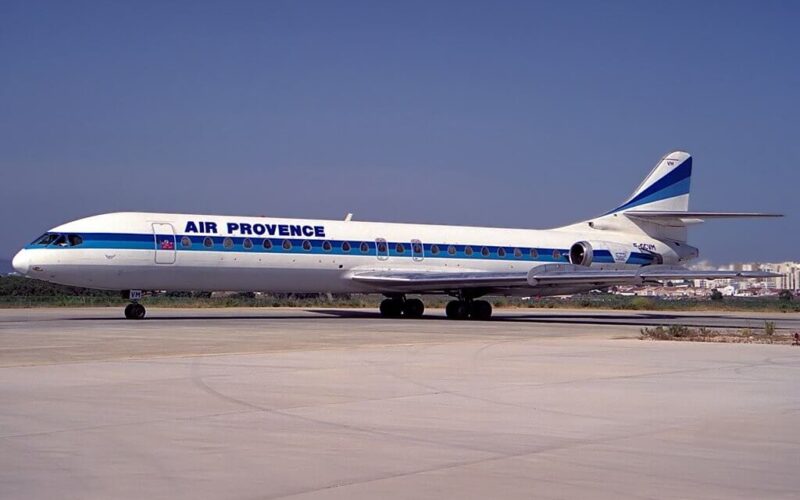On May 27, 1955, the first French-built jetliner powered up its engines and rolled down the taxiway towards the runway to achieve a significant milestone in its development process – to lift its wings off the ground for the first time. The Sud Aviation Caravelle made its public debut with the hope that it could lift the European aerospace industry up, as the previous jetliner that left the continent was the De Havilland Comet, an aircraft that had its long list of trials and tribulations.
The Sud Aviation-built Caravelle lifted its sleek fuselage off the runway at 7:15 PM local time (UTC +3), piloted by Pierre Nadot, the captain, first officer Andre Moynot. The two were accompanied by Jean Avril, a mechanic and Roger Beteille. The short 22-minute flight marked the successful entry of the French aerospace industry into the commercial jet age.
However, the sales campaign was not so successful. Despite their best attempts, including Sud Aviation taking on a demonstrational tour in the United States in 1957, the company only sold 279 units worldwide. Three more prototypes were built for testing purposes but were never delivered to customers.
Its biggest downfall, possibly, was the fact that it was purposefully developed for the short and mid-range markets; carrying 80 passengers in a standard configuration was not particularly attractive to potential customers. Furthermore, five and six years later since the Caravelle’s entry into service in 1959, the Boeing 727 and the Douglas DC-9, respectively, entered service – similar, yet much better aircraft in their own right due to their capacity and range.
Nevertheless, the Sud Aviation Caravelle was a pioneer in its own right. It was the first aircraft with engines mounted at the back of the aircraft. It was also the first European jetliner sold to a United States airline, as United Airlines purchased 20 of them, possibly laying the groundwork for other European aircraft manufacturers to sell their aircraft on the other side of the Atlantic ocean.

